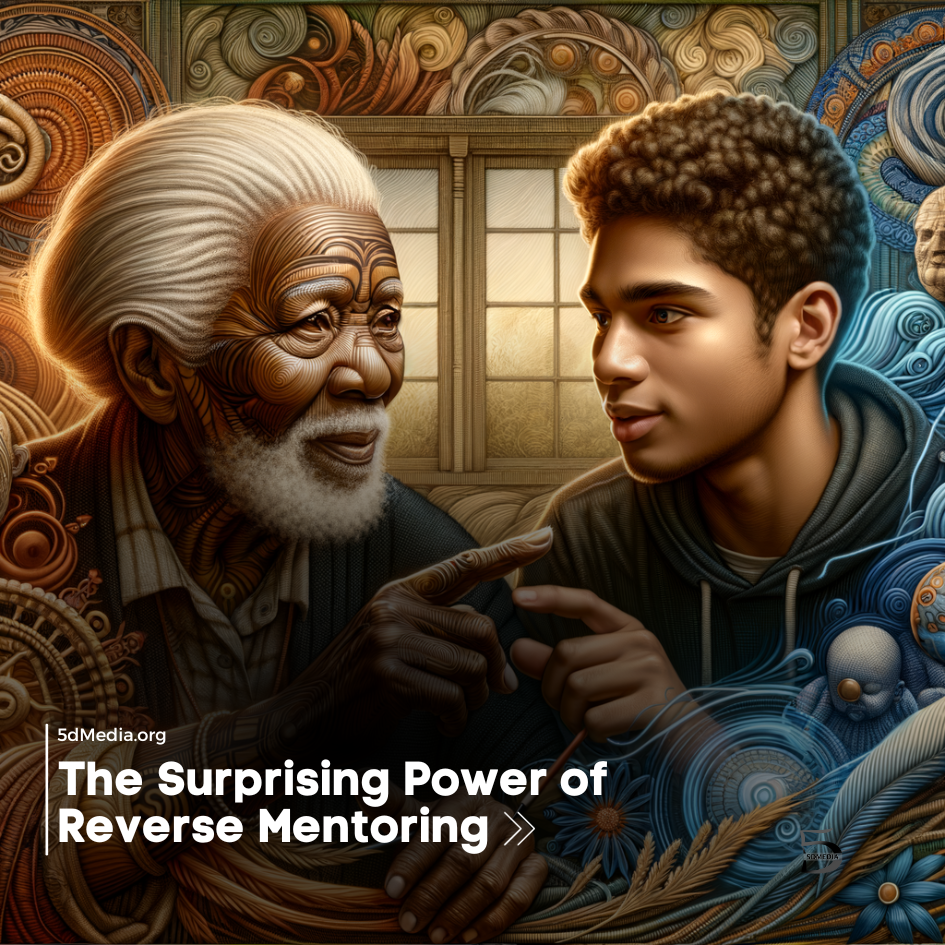Exploring the Unheard Voices: How Reverse Mentoring Can Break Down Hierarchies and Foster Inclusion
In the labyrinth of corporate structures, the echoes of traditional hierarchies often drown out the whispers of innovation and fresh perspectives. But what if we could amplify those whispers? What if the unheard voices within an organization could become its guiding force? This is the transformative vision of reverse mentoring, a concept that is reshaping the power dynamics of the workplace and sowing the seeds of inclusion and mutual respect.
The Genesis of Reverse Mentoring
Reverse mentoring turns the conventional mentor-mentee relationship on its head. Traditionally, mentoring has been viewed as a one-way street where seasoned professionals impart their wisdom to younger colleagues. However, reverse mentoring flips this dynamic, allowing junior employees to mentor senior staff. This approach not only challenges traditional power structures but also fosters a culture of learning and adaptability.
The Power Dynamics Dance
In most organizations, power flows from the top down. Senior leaders make decisions that ripple through the ranks, often without a thorough understanding of the day-to-day experiences of their junior staff. Reverse mentoring invites leaders to step down from their pedestals and engage in a dance of knowledge exchange with those who are typically on the receiving end of their decisions.
Breaking Down Hierarchies
Hierarchies are not inherently negative; they can provide structure and clarity. However, when they become rigid, they stifle creativity and create barriers to communication. Reverse mentoring serves as a jackhammer to these barriers, creating a more level playing field where ideas can flow freely.
Encouraging Fresh Perspectives
The rapid pace of technological advancement and cultural shifts can leave even the most experienced professionals struggling to keep up. Junior employees, often being digital natives and more in tune with contemporary trends, can offer invaluable insights into emerging technologies, social media, and current market preferences.
Creating a Culture of Mutual Respect
When senior staff members show a willingness to learn from their junior counterparts, it sends a powerful message throughout the organization. It demonstrates that every employee, regardless of rank, has value and that their insights are worthy of attention. This can lead to a more inclusive and respectful workplace culture.
The Inclusion Imperative
Inclusion is not just a buzzword; it’s a business imperative. Diverse teams are more innovative, better at problem-solving, and have a broader understanding of customer needs. Reverse mentoring can be a catalyst for inclusion by giving voice to those who might otherwise remain unheard.
Empowering the Marginalized
Employees from underrepresented groups often face additional hurdles in having their voices heard. Reverse mentoring can empower these individuals by providing a platform for their perspectives and experiences to influence decision-making processes.
Bridging Generational Gaps
The workforce today spans multiple generations, each with its own set of values, communication styles, and work habits. Reverse mentoring can bridge these gaps, fostering understanding and collaboration across age groups.
Fostering Empathy and Understanding
By stepping into a mentorship role, junior employees can share their experiences and challenges with senior leaders, fostering empathy and a deeper understanding of the diverse workforce that makes up the organization.
Implementing Reverse Mentoring
Implementing a reverse mentoring program requires careful planning and a willingness to embrace change. Here are some steps organizations can take to ensure the success of such initiatives:
Leadership Buy-In
For reverse mentoring to work, it must have the support of the organization’s leadership. Leaders must be open to the idea of being mentored by junior staff and willing to act on the insights gained.
Clear Objectives
Define clear objectives for the reverse mentoring program. What does the organization hope to achieve? Whether it’s enhancing technological savvy, improving diversity and inclusion, or simply fostering better communication, having clear goals will help measure the program’s success.
Training and Support
Both mentors and mentees may need training to make the most of their interactions. Providing guidance on effective communication, setting expectations, and establishing boundaries can help ensure that both parties benefit from the experience.
Feedback and Iteration
Like any initiative, reverse mentoring programs should be subject to regular review and feedback. Encourage participants to share their experiences and be prepared to make adjustments to the program as needed.
The Journey Ahead
As we stand at the crossroads of tradition and innovation, reverse mentoring offers a path forward that is inclusive, empowering, and transformative. It is a journey that requires courage, openness, and a willingness to listen to the unheard voices within our organizations. Those who embark on this journey will not only break down hierarchies but also build bridges to a future where every voice is valued, and every perspective is a treasure waiting to be discovered.
In conclusion, reverse mentoring is not just a strategy; it’s a movement towards a more inclusive, dynamic, and empathetic workplace. It’s an invitation to reimagine the potential of every employee and to recognize that sometimes the most profound wisdom comes from those we least expect. Let us embrace this opportunity to turn the hierarchy on its head and, in doing so, elevate our organizations to new heights of innovation and inclusivity.


